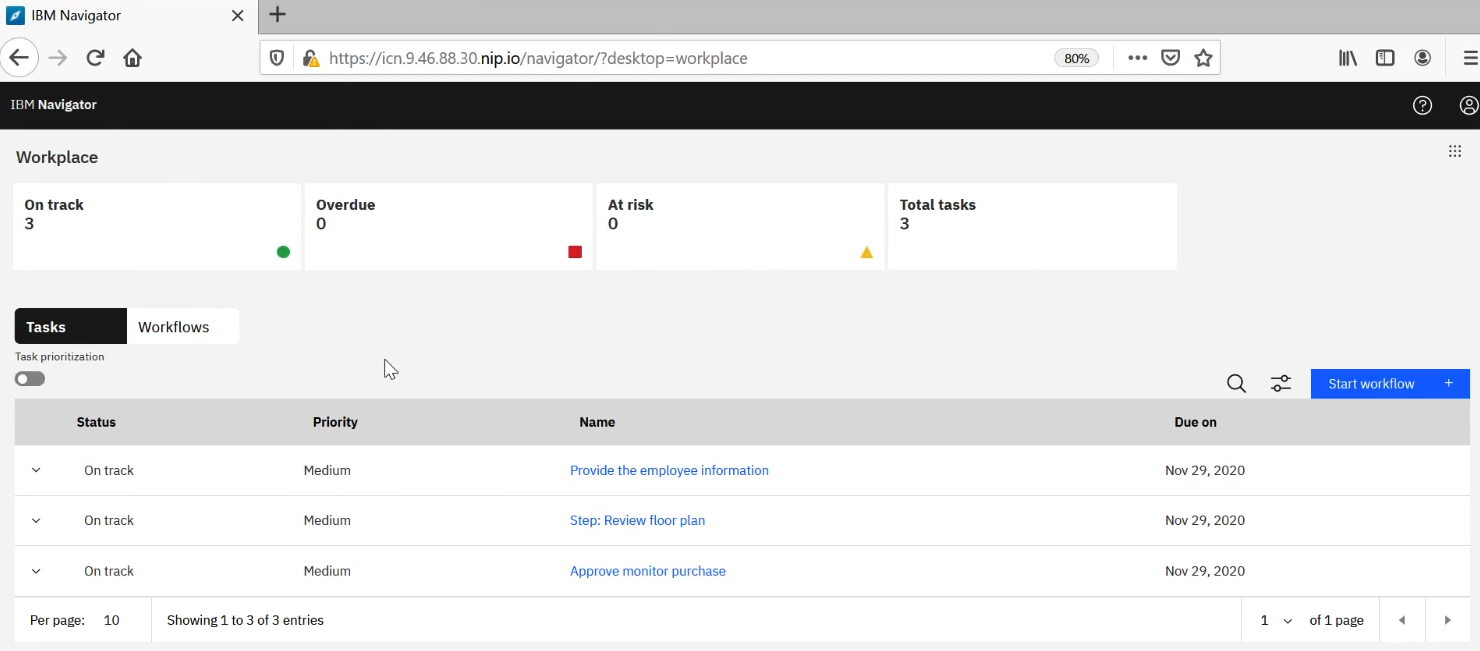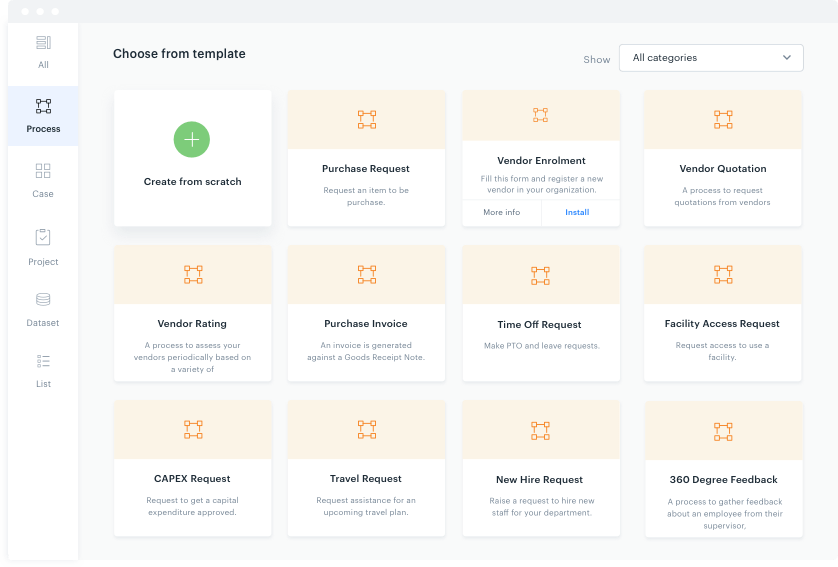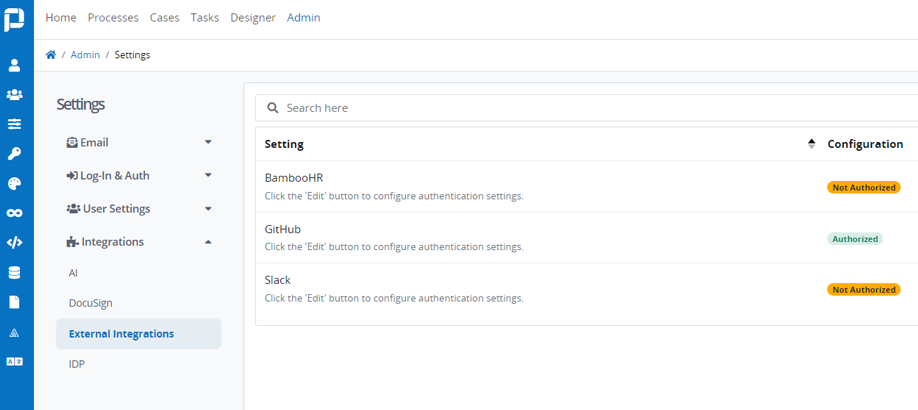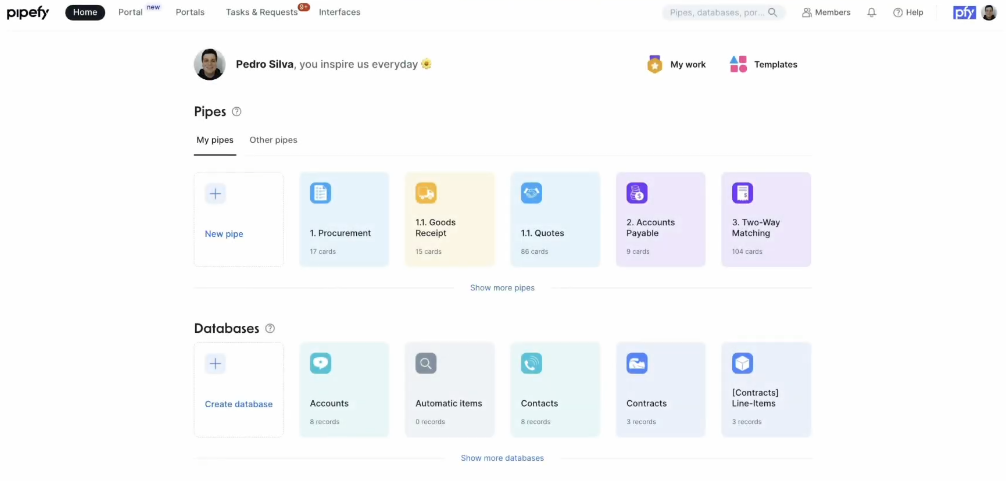Business Process Management: Unito’s Ultimate Guide to Getting More Out of Process
Process is everything. Whether you’re running a small business or a multi-national corporation, you need repeatable steps for getting things right. But sometimes, those steps feel more like a hindrance than a help. That’s where business process management comes in.
Here’s why.
What is a business process?
A business process is a series of steps you need to take to achieve a specific goal. These steps are usually repeated, and can be improved over time. Business processes are present in every team, every department, and every quarter. Here are some examples of common business processes:
- Customer support ticket escalation
- Contract negotiation
- Recruitment and hiring
- Marketing campaign research
- Employee onboarding
- Cash flow projection
- Order processing
These processes are essential to business operations, but that doesn’t mean every process is. In fact, large businesses can often become bloated with unnecessary processes that slow teams down and potentially jeopardize entire projects. Eliminating these processes is a bit part of business process management.
What is business process management?
Business process management is all about making existing processes more efficient, more effective, and less of a headache for everyone involved. There are seven essential steps to business process management.
Step 1: Discovery
This may sound like an unnecessary step, until you realize that you’re far from knowing about every business process in the organization. Whether it’s formalized or not, each process has potential for improvement.
Step 2: Modeling
Once you’ve become aware of a business process, you need to map it out. Find out exactly which teams are involved in it, what they’re doing at each stage, and what kind of resources they need to get things done. If you’re using business process management software, you’ll probably have some method of doing this without manual work.
Step 3: Analysis
After mapping out your business process, it’s time to go through it with a fine-tooth comb. At this stage, you’ll start trying to find the weak points, talk to the people involved, and start really figuring out what’s making a business process less efficient.
Step 4: Measurement
Not every aspect of a business process is measurable, of course, but things like the resources involved in each step (like budget and hours worked) have to be.
Step 5: Improvement
Are there steps that need to be swapped out for something more efficient? Maybe you’ve stumbled on a process that needs to be eliminated entirely? Business process management is all about improving what you find.
Step 6: Optimization
Optimization is a little different from improvement. Where improving a business process might involve swapping out a step or two, or finding ways to sidestep unnecessary bureaucracy, optimization is about finding incremental changes that make things more efficient.
Step 7: Automation
Business process automation is essential for eliminating manual work, redundancies, and saving time for more important matters.
3 Types of business process management
Organizations rely on many business processes, but tactics for managing them usually fall in one of three categories.
- Integration-centric business process management: This focuses on business processes that cross multiple tools to find ways to integrate them.
- Human-centric business process management: These processes involve the way people work, making it easier and more satisfying for them to get essential work done.
- Document-centric business process management: Organizations create and process tons of documents, and there are a ton of business processes that crop up around them.
How to manage hidden business processes
Everyday team processes usually form when managers lay out the steps and get input from their team. If the team agrees the process is reasonable and effective, it gets encoded into the project management tool they’re using. But what about the processes that develop organically between teams? Such workflows aren’t always efficient.
Informal team processes usually stick because of the “we’ve always done it this way” approach. However the problem with that approach is that informal traditions can hide a lot of wasted labor and procedures that are no longer necessary.
Spotting hidden team processes will make it easier to optimize areas of inefficiency. Let’s take a closer look.
What Are Hidden Team Processes?
Workflows spanning multiple teams are everywhere. For example, in a project to design a sales landing page, several teams might be involved:
- The marketing team, who determines the content of the page
- The creative team, who designs the look of the page and writes copy for it
- The development team, who actually builds the page and makes it functional
How can you tell if there is an informal process between these teams? Ask yourself the following questions. Who designs the workflow that integrates the work from each of these teams into the project? How are these workflows implemented, tracked, and measured?
If you can identify a workflow but can’t answer these questions about it, you’ve found a hidden team process. Hidden team processes can be some of the most essential functions of your business, but, too often, they’re process orphans. Usually, no one designs them – they just happen. They developed out of ad hoc solutions, common sense, baked-in habits, or the “well, we’ve always done it this way.” approach.
Why do Hidden Team Processes Stay Hidden?
Why don’t hidden workflows get formalized and improved? Usually because they’re “good enough.” If they’re not causing problems and creating a sticking point, nobody stops to really examine them. Since they have no formal overseers or creators, they’re not subject to periodic review or deliberate improvements. They just keep going, efficient or not.
Companies tend to spend time optimizing team and department level operations, however they often forget to improve processes between teams. In our experience, optimizing inter-team hidden processes result in some of the biggest productivity gains.
How Do You Find Your Hidden Team Processes?
In order to optimize hidden inter-team workflows, you first need to find them.
To do so, go back and look at the last 3-5 delivered projects that required more than one team to create – like a website launch, a tech event, or some product or major feature launch.
Interview the team members who worked together, focusing on the people who coordinated the teams. Here are the questions you want to ask:
- What processes did you follow?
- Were they efficient?
- Did they result in a good, finished project?
- What could be improved, if you tried to intentionally create a cross-team workflow?
The answers will help you pinpoint hidden processes, and start building a formalized workflow between teams.
How to Improve Them
Once you’ve pinpointed hidden team processes, it’s time to start improving them. Here are our tips for making workflows more efficient.
- Document everything. The first step to improving a hidden process is documenting it’s steps.
- Assess and analyze. Once you have the process written out, assess where it can be improved.
- Prioritize. Pick areas where the smallest improvements will have the biggest impacts, and start with those.
- Adjust and improve. Workflow improvement is an ongoing thing, which is why you should integrate process improvement as part of the workflow itself.
- Use workflow management software: This kind of software automates the movement of data between tools, streamlining processes that need to go through multiple platforms.
5 Examples of business process management tools
Business process management tools — also called BPM software — allow organizations to identify, improve, and automate their processes. Here are just a few examples.
IBM Business Automation Workflow

IBM’s option for business process automation is a robust platform built with the enterprise-sized organization in mind. It has built-in monitoring and analytics, public cloud access, and deep workflow management capabilities. If you’re already using other IBM services, it’s a good first platform to try.
Kissflow

If you have a dedicated team that can automate business processes in a low-code platform, then Kissflow might be the right option for you. With Kissflow, your team can build apps to automate different parts of your business much faster than if they had to start from scratch.
ProcessMaker

Want a little AI help to automate your business processes? ProcessMaker is an AI-powered BPM tool that supports processes in finance, human resources, IT, Ops, and more. It’s a bit more technical than some other BPM tools on this list, meaning it’s best suited to enterprise-sized organizations.
ProcessMaker

Want a little AI help to automate your business processes? ProcessMaker is an AI-powered BPM tool that supports processes in finance, human resources, IT, Ops, and more. It’s a bit more technical than some other BPM tools on this list, meaning it’s best suited to enterprise-sized organizations.
Zoho Creator

Zoho is a suite of software solutions that includes a project management tool, CRM, spreadsheet tool, and a lot more. Zoho Creator allows users to build anything from internal tools to customer-facing portals and core business systems.
Pipefy

No matter which business processes you’re looking to automate, Pipefy is a great solution. With AI-powered features, Pipefy allows IT teams to start building workflows from a single prompt, making managing any business process a breeze.
Why flexible team processes are better than policies
Try to imagine yourself putting together a document to communicate how the teams in your company get projects done. What do you think it would resemble—a roadmap or a rulebook?
If it’s the latter, your company may be using inflexible policies rather than processes— and that can be a major problem. Inflexibility impedes your teams from reaching their full potential by preventing them from optimizing their workflows. This is especially true for policies that require all teams to operate via the same project management tool like Asana, Jira, Trello, or Wrike. A big part of business process management is keeping things flexible and reactive.
Process versus policy
Process is a good thing — it gives structure to your workflow, identifies tasks that support big-picture goals, raises accountability, and improves the efficiency of communication. Policy on the other hand, is the evil alter ego of process. Every company has policies, but when processes become policy and are not permitted to change or evolve changed, they immediately lose one of their most important attributes: flexibility.
One of the most common types of policies in companies is requiring everyone to use a specific tool for managing their projects. But what happens if this tool isn’t a good fit for some of the teams in the company? If you ask all your teams have to manage their work through specific processes in specific tools, they will lose the flexibility to operate via the team process that work best for them. Such inflexibility may hamper their efficiency and effectiveness.
For example, you may ask your marketing and engineering teams to manage all their work out of Jira. While Jira may be a preferred choice for your developers’ work processes, your marketers may find that Asana’s features better meet their project collaboration needs.
So how can you avoid one tool policies that don’t give your teams the flexibility they need to manage their projects?
Adopt multiple tools
One of the best ways to encourage the use of flexible team process rather than policy within your company is to let your teams choose the tools that best fit their needs. This way, teams will be able to determine which process works best for their projects, optimize their processes if necessary, and use this team process to effectively manage their work.
You may be asking yourself, “but if my teams all use different tools, how can they stay aligned on projects? Won’t this strategy develop communication silos?” Normally, the answer would be yes. That is, until Unito came to be.
Using project management tools for business process management
You’re already using some project management tool — Asana, Wrike, Trello, or a big whiteboard next to the coffee maker (though if that’s your PM tool, consider upgrading). Rather than mapping and documenting work processes separately, it would be easier to simply encode them into your project planning tools. This way, business process management become a natural part of your team’s day. Not some time-wasting monsters you’re always trying to avoid.
How can this be done?
While we’d love to show you examples for encoding process into every tool out there, the truth is that would be both impossible and tedious. So instead, here’s an example of how to do it in Asana. The rest of you will have to extrapolate.
Let’s use a sample blogging process for this example.
- First, create a task in your PM tool of choice to represent the business process.
- Outline the process in it, including its goals.
- You can also assign a task owner who’s job it is to manage this process.
- Create subtasks for each recurring step in the business process.
- Inside each subtask, write the steps of the process.
- The recurring work could be to check some inbox or funnel, to schedule a meeting, to review data, etc. In this case, it’s conducting SEO research to choose a topic.
- Assign the subtasks to the person responsible for doing it or dispatching it. This makes sure it’s in their list of new tasks and prevents projects from slipping through the cracks.
- Make the subtask reoccur at the designed frequency.
- If you know that something needs to happen every week or every month, why not automate the project so you’re not recreating the task?
- Sit back and enjoy as your process fades into the background, and your work starts going smoothly!
The Benefits of an Encoded Process
Working business process management into your project management tool makes life easier in a lot of ways:
- It documents the process in the place where it’s used, increasing the value of the documentation massively (since it’ll always be right in front of the eyes of the person to whom it’s most relevant). It also makes for an easy, templated approach to creating new projects.
- It creates a log of executions for the process and its steps. This provides useful data for adapting and improving your process, which is one of the main benefits of an agile project management system. Your processes should never be set in stone—look for a way to update and make them more efficient. Following that, edit your tasks accordingly so any future executions will show the updated process.
- It ensures that subtasks will automatically show up in an assignee’s own personal to-do list. This boosts accountability, and ensures tasks don’t fall through the cracks. Say hello to a more efficient use of everyone’s time and energy.
Why business process management should focus on people
Integrating business processes is important when teams are scattered across multiple tools. Truly effective business integration isn’t about trying to make people fit their tools. Instead, it’s time to focus on collaborative interaction between people, empowered by their tools, rather than adopting a tool-first mentality.
The pitfalls of focusing on “process”
Of course, to optimize your workflows and integrate your tools, you have to think about your processes. Addressing some simple, process-based tasks upfront can be a quick way to start optimizing how you work, and can open the door to a deeper focus on integrating people and teams.
Asking yourself simple questions can help get you started. For instance:
- How do you escalate a support ticket?
- How do you bill users?
- How do you manage project approvals?
But when you focus too much on process, it’s easy to get locked into one way of doing things that may not work for everyone. Teams are made up of humans, not robots. Work is constantly evolving, and not everyone works — or wants to work — the same way.
Think about how your team’s work changed throughout 2020. You probably had processes in place in February that went out the window in March, or at least underwent major tweaks as you rebuilt your tool stack for a workforce suddenly working remotely.
How to integrate people instead of processes
While your processes and tools may have changed in 2020, your people stayed essentially the same. More than ever, they need ways to integrate their work beyond simple, process-based solutions.
Let’s see how you can do this with the process-based questions asked above.
Escalating a ticket
You need a clear process for escalating a support ticket. But this is a tricky workflow where teams who don’t often communicate have to work intensively together. Their priorities are different, and their tools are not designed for cross-team communication.
The customer support agent often ends up managing processes rather than advocating for customers. Instead, think about what you can do to help customer support work with engineering to resolve customer issues and surface new opportunities.
By using a workflow management solution like Unito, you can integrate engineering tools like Jira with support tools like Zendesk so that CSAs and developers can collaborate in real time with no copy-and-pasting. Developers can focus on fixing bugs without interruption, and CSAs can focus on client concerns rather than chasing developers for updates.
Billing users
Instead of simply automating billing, think about how sales can work with accounting to make sure everyone understands the state of your sales funnel. Improved communication helps everyone meet upcoming targets and reporting requirements.
Customer service and marketing may be involved here, too, as they may have insights into where your current billing process creates friction for new or existing clients.
By connecting sales tools like Salesforce with Asana and Trello, you can connect key players across all teams involved in billing, from triggering the sale to billing support.
Project reporting and approvals
Project approval might just be one checkbox in your project management workflow. But project reporting and approvals can involve a ton of work, with multiple stakeholders requiring different levels of information and input. So, how can team leaders and managers provide ongoing feedback to internal teams and outside suppliers without constant meetings and data-intensive update reports? How can you make reporting and approvals a way of disseminating institutional knowledge rather than making teams feel like they’re simply jumping through hoops?
By integrating tools like Asana and Trello to create a key deliverables board, stakeholders can access the information they need without requesting one-off reports.
The information is always up-to-date, and team members can address questions from the tools they use for their day-to-day work. Teams and stakeholders can communicate seamlessly, without interruption or filtering messages through multiple team leads and supervisors.
Optimizing business process management for human interaction
We may not know exactly what this year has in store, but it’s safe to assume there are more curveballs ahead. Understanding how people work together and giving them tools to optimize the way they work creates flexibility to adapt to whatever big changes happen next.
Robots work in a linear one-way process, from start to finish. They can do some things efficiently, but they don’t respond well to change. Humans, on the other hand, adapt on the fly and respond to new challenges by relying on each other. Conversation, whether in person or using online tools, allows information to flow in multiple directions. When information is clear, current, consistent, and easy to access, your team is well set up to respond to every challenge, from the simplest support concern to the next big crisis.
So, how can you create an environment that encourages communication and collaboration? Let’s get this out of the way first; effective collaboration is not about multiple meetings, phone calls, or text updates. Instead of scheduling these constant interruptions throughout the workday, ensure all the tools and the integrations you use to connect them allow two-way communication.
When your tool environment keeps information updated in real time, or as close to real time as possible, all stakeholders can confidently access the information they need. When they know the data they see is consistent with that seen by their peers on different teams, they can collaborate effectively without the need for constant one-on-one check-ins.
With the right integrations, you don’t have to think about tools and processes first. You can focus on the people working with you and helping them doing their best work.


